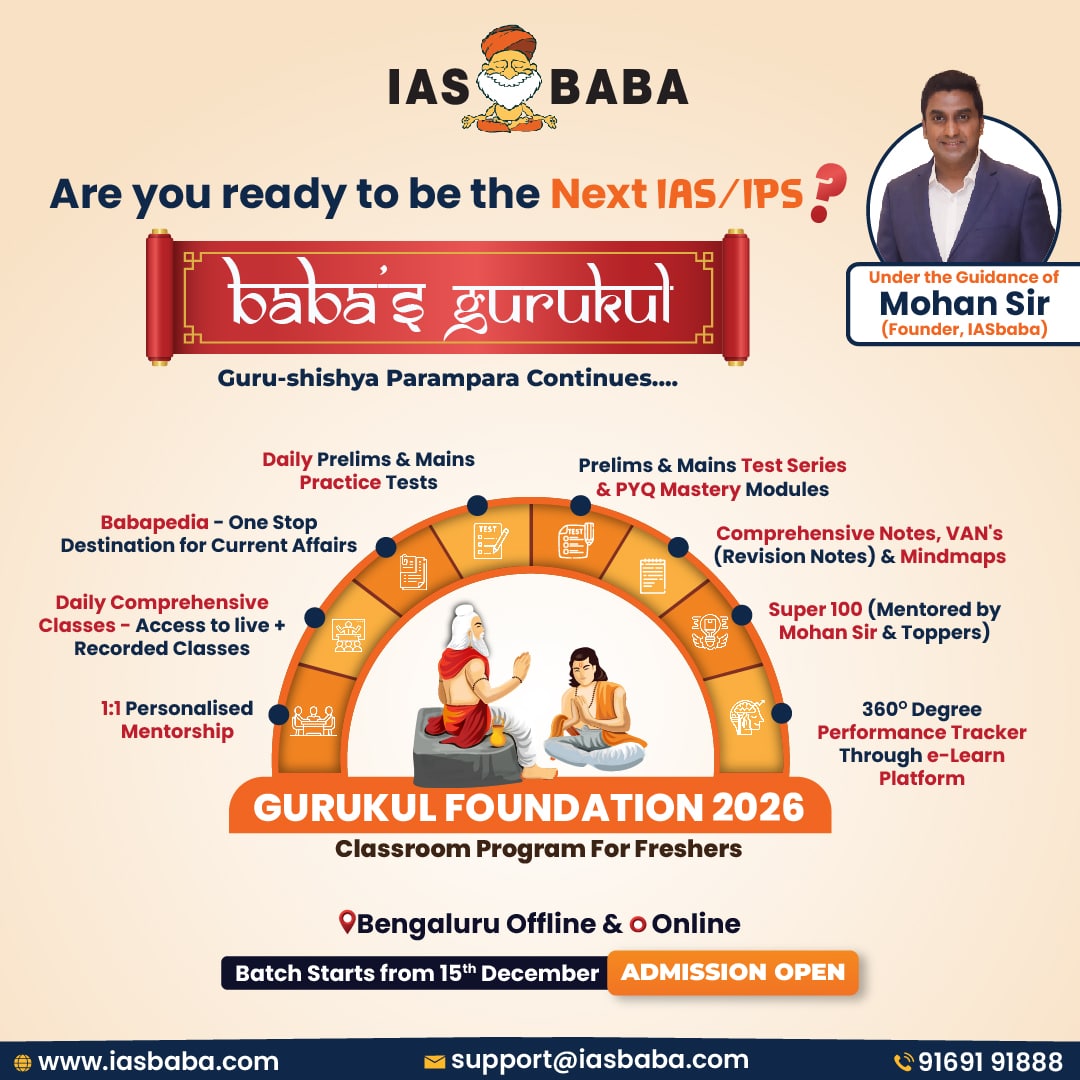IASbaba's Daily Current Affairs Analysis
Archives
(PRELIMS & MAINS Focus)
Syllabus
- Prelims – Environment
Context: Recently forest officials of Katarniaghat division says it has plan for the financial inclusion of the Tharu people that live near the Katarniaghat Wildlife Sanctuary (KWS).
About Katarniaghat Wildlife Sanctuary (KWS):
- The Sanctuary is a protected area in the Upper Gangetic plain in Uttar Pradesh.
- It was brought under the purview of the ‘Project Tiger’ in 1987.
- KWS with the Kishanpur Wildlife Sanctuary and the Dudhwa National Park it forms the Dudhwa Tiger Reserve, which was established in 1975.
- Katerniaghat Forest provides strategic connectivity between tiger habitats of Dudhwa and Kishanpur in India and the Bardia National Park (Nepal).
- The Gairwa river flows in the sanctuary area is declared as a sanctuary for Mugger and Gharials.
- Fauna: Endangered species including, tiger, rhino, swamp deer, hispid hare, Bengal florican, the white-backed and long-billed vultures.
- It is among the few places in India where Gangetic dolphins (fresh water dolphins) are found in their natural habitat.
- Flora: Its fragile Terai ecosystem comprises a mosaic of sal and teak forests, lush grasslands, numerous swamps and wetlands.
About Tharu People/tribe:

- The word Tharu is believed to be derived from sthavir, meaning followers of Theravada Buddhism.
- Community belongs to the Terai lowlands, amid the Shivaliks or lower Himalayas in India and Nepal.
- They live mostly in Uttarakhand, Uttar Pradesh, and Bihar in Indian terai region.
- They speak various dialects of Tharu, a language of the Indo-Aryan subgroup, and variants of Hindi, Urdu, and Awadhi.
- In central Nepal, they speak a variant of Bhojpuri, while in eastern Nepal, they speak a variant of Maithili.
- Tribe worship Lord Shiva as Mahadev, and call their supreme being “Narayan”.
- They believe “Narayan” is the provider of sunshine, rain, and harvests.
- Tharu women have stronger property rights than is allowed to women in mainstream North Indian Hindu custom.
Source: Hindustan Times
Previous Year Questions
Q.1) Which of the following Protected Areas are located in Cauvery basin? (2020)
- Nagarhole National Park
- Papikonda National Park
- Sathyamangalam Tiger Reserve
- Wayanad Wildlife Sanctuary
Select the correct answer using the code given below:
- 1 and 2 only
- 3 and 4 only
- 1, 3 and 4 only
- 1, 2, 3 and 4
Q.2) Which of the following are the most likely places to find the musk deer in its natural habitat? (2020)
- Askot Wildlife Sanctuary
- Gangotri National Park
- Kishanpur Wildlife Sanctuary
- Manas National Park
Select the correct answer using the code given below:
- 1 and 2 only
- 2 and 3 only
- 3 and 4 only
- 1 and 4 only
Syllabus
- Prelims – Economy
Context: Recently Financial Services Institutions Bureau (FSIB) recommended names for the posts of managing directors of Bank of Baroda and Bank of India.
About Financial Services Institutions Bureau (FSIB):
- It’s a government body set up under the department of financial service by central government in 2022.
- The Secretariat of the Bureau currently comprises of Secretary and four officers.
- It replaced Banks Board Bureau (BBB).
- It aims to identify manpower capabilities and ensure proper selection of talent for senior positions at financial institutions owned by the government.
- The board is entrusted to making recommendations of full-time appointment of directors and non-executive chairman of state-run financial services / Public sector organization and on other matters relating to personnel management in the institution.
- It comprises of Ex-Officio members from Government other the Regulatory Bodies and experts from the respective field.
Function of FSIB:
- To advise the Government on matters relating to appointments, transfer or extension of term of office and termination of services of the said directors.
- To advise the Government on the desired management structure at the Board level for Public Sector Bank, Public financial institution and Public Sector Insurers.
- To advice government for performance appraisal system and code of conduct and ethics for the directors.
- To ensure suitable training and development programmes for management in PSBs, FIs and PSIs.
- To Help institution for developing business strategy and raising capital plan.
Source: The Hindu
Previous Year Questions
Q.1) With reference to the ‘Banks Board Bureau (BBB)’, which of the following statements are correct? (2022)
- The Governor of RBI is the Chairman of BBB.
- BBB recommends for the selection of heads for Public Sector Banks.
- BBB helps the Public Sector Banks in developing strategies and capital raising plans.
Select the correct answer using the code given below:
- 1 and 2 only
- 2 and 3 only
- 1 and 3 only
- 1, 2 and 3
Q.2) Consider the following statements:
- The Governor of the Reserve Bank of India (RBI) is appointed by the Central Government.
- Certain provisions in the Constitution of India give the Central Government the right to issue directions to the RBI in the public interest.
- The Governor of the RBI draws his power from the RBI Act.
Which of the above statements are correct? (2021)
- 1 and 2 only
- 2 and 3 only
- 1 and 3 only
- 1, 2 and 3
Syllabus
- Prelims – Science and Technology
Context: The 21st Edition of the Bilateral Naval Exercise between India and France – Exercise Varuna commenced recently.
About Exercise Varuna:

- The Indian and French Navies have been conducting bilateral maritime exercises since 1993. Since 2001, these exercises have been called ‘VARUNA’.
- These interactions further underscore the shared values as partner navies, in ensuring freedom of seas and commitment to an open, inclusive Indo-Pacific and a rules-based international order.
- The joint-exercises are held either in the Indian Ocean or Mediterranean Sea with the aim of improving Indo-French coordination on capabilities like:
- cross-deck operations,
- replenishment-at-sea,
- minesweeping,
- anti-submarine warfare and
- information sharing.
- Other Indo-French Joint Exercises:
- Desert Knight-21 and Garuda (Air exercise)
- Shakti (Army exercise)
Source: NewsOnAir
Syllabus
- Prelims – Environment
Context: The Ministry of Environment, Forest and Climate Change (MoEFCC) has listed Neelakurinji ( Strobilanthes kunthiana) under Schedule III of the Wildlife (Protection) Act, 1972, including it on the list of protected plants.
About Neelakurinji:
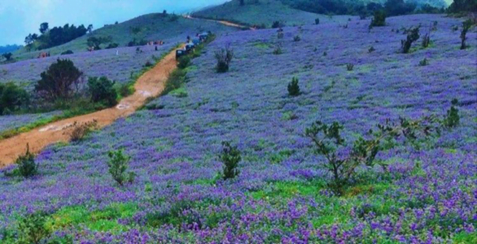
- It is a shrub that is found in the shola forests of the Western Ghats in Kerala, Karnataka and Tamil Nadu.
- Locally known as Kurinji, the flowers grow at an altitude of 1,300 to 2,400 metres.
- Nilgiri Hills, which literally means the blue mountains, got their name from the purplish blue flowers of Neelakurinji that bloom only once in 12 years.
- Kurinjimala Sanctuary of Kerala protects the Kurinji in approximately 32 km2 core habitat in Kottakamboor and Vattavada villages in Idukki district.
- Kurinji Andavar temple located in Kodaikanal of Tamil Nadu dedicated to Tamil God Murugan also preserves these plants.
- The Paliyan tribal people living in Tamil Nadu used it as a reference to calculate their age.
- Karnataka has around 45 species of Neelakurinji and each species blooms at intervals of six, nine, 11 or 12 years.
- Besides the Western Ghats, Neelakurinji is also seen in the Shevroy in the Eastern Ghats, Sanduru hills of Bellary district in Karnataka.
Source: The Hindu
Previous Year Question
Q.1) Which one of the following National Parks lies completely in the temperate alpine zone? (2019)
- Manas National Park
- Namdapha National Park
- Neora Valley National Park
- Valley of Flowers National Park
Syllabus
- Prelims – Science and Technology
In News: A radio signal originating from atomic hydrogen in an extremely distant galaxy was detected by the Giant Metrewave Radio Telescope (GMRT) located in Pune, as per the scientific journal Monthly Notices of the Royal Astronomical Society.
- This is the largest astronomical distance over which such a signal has been picked up.
Giant Metrewave Radio Telescope(GMRT):
- GMRT is a low-frequency radio telescope that helps investigate various radio astrophysical problems ranging from nearby solar systems to the edge of the observable universe.
- It is located in Pune, India
- Using GMRT data, scientists have detected a radio signal from atomic hydrogen in a distant galaxy at redshift z=1.29.
- The signal detected by the team was emitted from this galaxy when the universe was only 4.9 billion years old; in other words, the look-back time for this source is 8.8 billion years.
- The atomic hydrogen mass of this galaxy is almost twice as high as its stellar mass.
- These results demonstrate the feasibility of observing atomic gas from galaxies at cosmological distances in similar lensed systems with a modest amount of observing time.
Redshift:


- Redshift represents the signal’s wavelength change depending on the object’s location and movement; a greater value of z indicates a farther object.
Atomic hydrogen:
- It is the basic fuel required for star formation in a galaxy. When hot ionised gas from the surrounding medium of a galaxy falls onto the universe, the gas cools and forms atomic hydrogen. This then becomes molecular hydrogen and eventually leads to the formation of stars.
- Understanding the evolution of galaxies over cosmic time requires tracing the evolution of neutral gas at different cosmological periods.
- Atomic hydrogen emits radio waves of 21 cm wavelength, meaning the wavelength is a direct tracer of the atomic gas content in nearby and distant galaxies.
- However, this radio signal is feeble and nearly impossible to detect the emission from a distant galaxy using current telescopes due to their limited sensitivity.
- Until now, the most distant galaxy detected using 21 cm emission was at redshift z=0.376, corresponding to a look-back time – the time elapsed between detecting the signal and its original emission – of 4.1 billion years.
Source: DTE
Previous Year Question
Q1) Which of the following is/are cited by the scientists as evidence/evidences for the continued expansion of universe? (2012)
- Detection of microwaves in space
- Observation of redshift phenomenon in space
- Movement of asteroids in space
Occurrence of supernova explosions in space code
- 1 and 2 only
- 2 only
- 1, 3 and 4
- None of the above
Syllabus
- Prelims – Environment
In News: The FireAId initiative had a successful pilot as per the report at the World Economic Forum Annual Meeting 2023 being held in Davos, Switzerland.
FireAId Initiative:
- It was launched in 2022 by the World Economic Forum (WEF)
- It aims at using artificial intelligence to effectively manage wildfire.
- The multistakeholder initiative that collaborates resources from governments, civil society and the private sector was formulated by Koç Holding, Turkey’s largest industrial conglomerate, and was joined by Deloitte, an international professional services network, that brought on board its own AI technology to develop a ‘digital twin’ for fire management.
- The project was made operational in the South Aegean and West Mediterranean region of Turkey, since a quarter of the country’s wildfires occurred there in 2010-2021 and accounted for 75 per cent of the total burned area during the period.
- From July-August 2021, Turkey experienced some of its worst wildfires that charred a total of 139,503 hectares.
- Static and meteorological data was used to map areas where fires can start, predicted the intensity and planned the logistics required for efficient response.
- The predictions reduced both response time and risk to firefighters
- The project can now be scaled up and expanded to other locations.
Sources: DTE
Syllabus
- Prelims – Governance
In News: Under The Health and Healthcare Community Dinner organized by World Economic Forum at Davos, Switzerland, Union Health Minister Mansukh Mandaviya said that India has initiated multiple schemes to strengthen health systems and improve health service delivery with focus on quality, accessibility, and affordability of healthcare services.
- Government is committed to implement the vision of Antyodaya as part of its pursuit of ensuring Universal Health Coverage.
Mission Antyodaya:
- Adopted in Union Budget 2017-18, Mission Antyodaya is a convergence and accountability framework aiming to bring optimum use and management of resources allocated by 27 Ministries/ Department of the Government of India under various programmes for the development of rural areas.
- It is envisaged as state-led initiative with Gram Panchayats as focal points of convergence efforts.
- Annual survey in Gram Panchayats across the country is an important aspect of Mission Antyodaya framework.
- It is carried out coterminous with the People’s Plan Campaign (PPC) of Ministry of Panchayat Raj and its’ purpose is to lend support to the process of participatory planning for Gram Panchayat Development Plan (GPDP).
- Mission Antyodaya focus on most backward districts.
- The convergence of multiple schemes under a single scheme could enable the government to migrate all these to the digital Aadhar-enabled platform thereby contributing further to the Digital India mission.
- Ministry of Rural Development offers mobile app.
Source: DTE
Syllabus
- Prelims – Art and Culture
In News: Archaeological Survey of India, ASI is all set to begin excavation at Delhi’s Purana Qila again – third time after excavations in the year 2013-14 and 2017-18.
- For the exposure and preservation of the trenches that were excavated in previous years.
- Evidence of layers predating the Mauryan period was found.
Purana Qila:
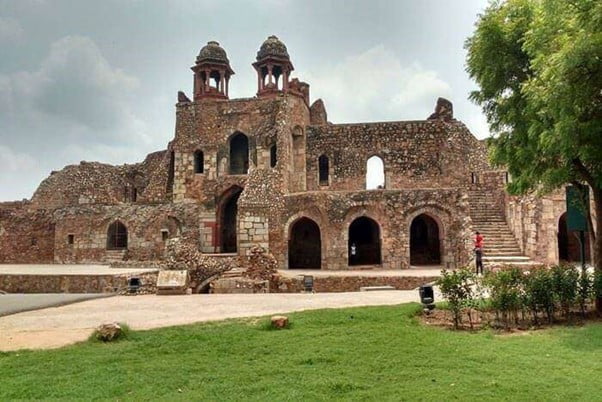
- Located in South Eastern part of New Delhi
- Purana Qilla, the 16th-century fort, was built by Sher Shah Suri and second Mughal emperor Humayun. The fort is standing on a site with thousands of years of history.
- Identified as ancient settlement of Indraprastha, a continuous habitation of 2500 years at Purana Qila was established in earlier excavations.
- Painted grey ware, belonging to 900 BC, an earthen pottery sequence from Maurya to Shunga, Kushana, Gupta, Rajput, Sultanates, and Mughal periods.
- Excavated Artefacts such as sickles, parers, terracotta toys, kiln-burnt bricks, beads, terracotta figurines, seals and dealings excavated.
- Historian Alexander Cunningham identified the fort with that of Indraprastha
- A fortification wall about 30 metre long was also found.
- Three arched gateways: the Bara Darwaza (Big Gate) facing west, which is still in use today; the south gate, also popularly known as the ‘Humayun Gate’ and lastly, the ‘Talaqi Gate’, often known as the “forbidden gate”.
- All the gates are double-storeyed sandstone structures flanked by two huge semi-circular bastion towers, decorated with white and coloured-marble inlays and blue tiles.
- They are replete with detailing, including ornate overhanging balconies, or jharokhas, and are topped by pillared pavilions (chhatris), all features that are reminiscent of Rajasthani architecture as seen in the North and South Gates, and which were amply repeated in future Mughal architecture.
- It also has Qila-i Kuhna Mosque and the Shermandal, both credited to Sher Shah
Source newsonair
Previous Year Question
Q1) Consider the following pairs: (2021)
(Historical Place) (Well-known for)
- Burzahom : Rock-cut shrines
- Chandra-Ketugarh : Terracotta art
- Ganeshwar : Copper artefacts
Which of the pairs given above is/are correctly matched?
- 1 only
- 1 and 2
- 3 only
- 2 and 3
Syllabus
- Mains – GS 2 (Governance) and GS 3 (Economy)
Context: With the Insurance Regulatory and Development Authority of India (Irdai) increasing the maximum number of tie-ups for corporate agents and insurance marketing firms, insurance companies are approaching microfinance institutions for partnerships to leverage their last-mile connectivity for deeper penetration into the rural market.
About Microfinance and Microfinance Institutions:
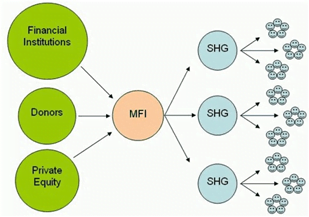
- Microfinance is a form of financial service which provides small loans and other financial services to poor and low-income households.
- The definition of “small loans” varies between countries.
- In India, all loans that are below Rs. 1 lakh can be considered as microloans.
- Microcredit is delivered through a variety of institutional channels viz:
- Scheduled commercial banks (SCBs) (including small finance banks (SFBs) and regional rural banks (RRBs)).
- Cooperative banks.
- Non-banking financial companies (NBFCs).
- Microfinance institutions (MFIs) registered as NBFCs as well as in other forms.
- MFIs are financial companies that provide small loans to people who do not have any access to banking facilities.
- MFI promotes financial inclusion which enables the poor and low-income households to come out of poverty, increase their income levels and improve overall living standards.
- It can facilitate achievement of national policies that target poverty reduction, women empowerment, assistance to vulnerable groups, and improvement in the standards of living.
Significance of Microfinance Institutions:
- It makes credit available easily thereby bettering the income and employment scenario.
- It helps in serving the under-financed sections such as women, unemployed people and those with disabilities.
- It helps low-income households to stabilize their income flows and save for future needs.
- In good times, microfinance helps families and small businesses to prosper, and at times of crisis it can help them cope and rebuild.
- Families benefiting from microloans are more likely to provide better and continued education for their children.
Challenges of MFI:
- Inadequate Data: Despite the fact that total loan accounts have been rising, it is unclear how these loans will actually affect clients’ levels of poverty because the available information is dispersed.
- Over-indebtedness: The two main issues that are straining the microfinance sector in India are the expanding trend of consumers taking out multiple loans and ineffective risk management.
- The microfinance industry offers loans with no security, which raises the possibility of bad debts.
- Eroding social objective: The social goal of MFIs—to enhance the lives of society’s marginalised groups—seems to have been weakening over time as they pursue development and profitability.
- Regulatory Issues: Microfinance institutions have entirely different needs and organisational structures than other traditional lending institutions.
- The microfinance sector is finding it difficult to survive due to a lack of an adequate regulatory framework.
- Poor structuring of organization: Lack of standardised data and fraud management system creates more NPAs and affects the credibility of the institution.
- Lending for Non-income Generating Purposes: The percentage of loans used for non-income generating purposes may be significantly greater than the RBI’s limit of 30% of the MFI’s total loans.
Way Forward:
MFIs should concentrate on developing a scalable and sustainable microfinance strategy with a clear mission for both economic and social welfare. The microfinance institutions should be encouraged by RBI to use a “social impact scorecard” to track their social impact. Best usage of technological integration will be able to assist MFIs in providing services as well as repayment collection processes.
Source: Financial Express
Syllabus
- Mains –GS 3 Science and technology, GS 4 Ethics
Context:
- In 2022, OpenAI opened its most recent and powerful AI chatbot, ChatGPT, to test its capability.
- It amazed netizens across the world by answering questions, fixing broken code, etc.
- Some users have been testing the bot’s capability to do nefarious things – Illicit actors have tried to bypass the tool’s safeguards and write malicious code.
ChatGPT:
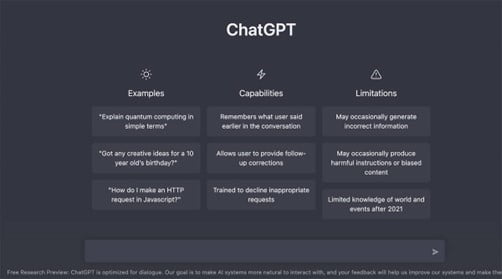
- ChatGPT is a ‘conversational’ AI based on OpenAI’s GPT 3.5 series of language learning models (LLM).
- This is a kind of computer language model that relies on deep learning techniques to produce human-like text based on inputs.
- It has gone viral is because of the kind of responses it gives, being seen as a replacement for much of the daily mundane writing, from an email to even college-style essays.
- The model is trained to predict what will come next, and that’s why one can technically have a ‘conversation’ with ChatGPT.
- It is trained using “Reinforcement Learning from Human Feedback (RLHF).”
- OpenAI uses Microsoft Azure’s cloud infrastructure to run these models.
- Users have the option of downvoting or upvoting a response.
Applications:
- It will answer queries just like a human would.
- Such as tips on how to set up a birthday party, write an essay on why parliamentary democracy is better, and even a fictional meeting between two well-known personalities.
- It can answer follow-up questions and can also admit its mistakes, challenge incorrect premises, and reject inappropriate requests.
- It is being seen as a replacement for the basic emails, party planning lists, CVs, and even college essays and homework.
- It can also be used to write code, solve math equations, and even spot errors in code.
- It can write fiction but not at the level of a human.
Ethical Challenges:
- Biased content – Since in case of machine learning, artificial intelligence is developed based on input of information, incorrect or biased information can create “biased” content
- The chatbot displayed clear racial and sexist biases
- Lack of objectivity – Its knowledge of the world and events after 2021 is limited and may give inaccurate results.
- Lack of authenticity- It could give “plausible-sounding but incorrect or nonsensical” data that raises issues of credibility such as it can sometimes overuse certain phrases
- Lack of relevance – Although the chatbot gives grammatically correct answers, these lack context and substance.
- Write Malware– ChatGPT is programmed to block obvious requests to write malicious Code for amateur coders looking to build malware.
- However, the more seasoned ones could trick the bot into correcting or enhancing malicious code they have partially developed.
- They could get through the system by phrasing their request in an innocuous way.
- Phishing emails – OpenAI notes that asking its bot for illegal or phishing content may violate its content policy. But for someone trespassing such policies, the bot provides a starting point.
- Cybersecurity firm Check Point’s researchers tested the bot by asking it to draft a phishing email for a fictional webhosting firm – ChatGPT gave an impressive ‘phishing email’ in reply.
- The response section included a warning that read: “This content may violate our content policy. If you believe this to be in error, please submit your feedback – your input will aid our research in this area.”
- Plagiarism chokepoint
- In education sphere, the bot could be used to turn in plagiarised essays that could be hard to detect for time-pressed invigilators since GPT models write in a statistically vanilla way.
- New York City’s education department banned ChatGPT in its public schools.
- Privacy and security concerns – Large language models (LLM) can be easily automated to launch complicated attack processes to generate other malicious artifacts.
- Inherently buggy code
- Stack Overflow, a forum for software programmers, banned its users from using any AI-generated code on the platform.
Suggestions for future:
- Provide a universal framework of values, principles and actions to guide States in the formulation of their legislation, policies or other instruments regarding AI, consistent with international law.
- Protect, promote and respect human rights and fundamental freedoms, human dignity and equality, including gender equality; to safeguard the interests of present and future generations; to preserve the environment, biodiversity and ecosystems; and to respect cultural diversity in all stages of the AI system life cycle
- Promote equitable access to developments and knowledge in the field of AI and the sharing of benefits, with particular attention to the needs and contributions of LMICs, including LDCs, LLDCs and SIDS
- In education sphere – where the answers coming from a human and ChatGPT are in a similar zone, a different kind of pedagogy could help such as looking beyond summarisation and reporting based on what is available on the Internet can help.
- Proportionality and Do No Harm – none of the processes related to the AI system life cycle shall exceed what is necessary to achieve legitimate aims
- Right to Privacy, and Data Protection – Data for AI systems be collected, used, shared, archived and deleted in ways that are consistent with international law and in line with the values and principles
- Human oversight and determination – it is always possible to attribute ethical and legal responsibility for any stage of the life cycle of AI systems to physical persons or to existing legal entities.
- Human oversight refers thus not only to individual human oversight, but to inclusive public oversight
Way forward
- National and international governmental and non-governmental organizations, as well as transnational corporations and scientific organizations must collaborate to generate universal ethical values for AI.
- In education sphere, helping educators think through the different types of prompts to best assess students to help them stay away from using ChatGPT is important
Source DTE
Practice MCQs
Q.1) With reference to ‘Mission Antyodaya’, consider the following statements
- It aims at providing free ration to the most backward districts of India.
- It is co-terminus with People’s Plan campaign of Ministry of Rural Development
Which of the following statements are correct?
- 1 only
- 2 only
- Both 1 and 2
- Neither 1 nor 2
Q.2 Recently in news, Redshift phenomenon is a result of which of the following
- Doppler Effect
- Raman Effect
- Wave theory of light
- Quantum theory
Q.3) Consider the following statements regarding Katarniaghat Wildlife Sanctuary (KWS):
- It is located in terai region of Bihar
- The Gairwa river flows in the sanctuary area is declared as a sanctuary for Mugger and Gharials.
- Tharu tribal group lives near the sanctuary
Which of the statements given above are correct?
- 1 and 2 only
- 2 and 3 only
- 1 and 3 only
- 1 2 and 3
Comment the answers to the above questions in the comment section below!!
ANSWERS FOR ’ 18th January 2023 – Daily Practice MCQs’ will be updated along with tomorrow’s Daily Current Affairs.st
ANSWERS FOR 17th January – Daily Practice MCQs
Q.1) – a
Q.2) – b
Q.3) – b




